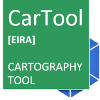Recommendation 19 | Principle 12: Assessment of effectiveness and efficiency
Evaluate the effectiveness and efficiency of different interoperability solutions and technological options considering user needs, proportionality and balance between costs and benefits.
Solutions
| List of all available solutions that implement this recommendation |
|---|

|
The key purpose of CAMSS tools is to allow its users to assess the effectiveness and efficiency of different solutions, as well as to ensure their interoperability. |

|
CAMSSaaS ensures that public administrations can assess and select in a transparent and trusted manner the most relevant interoperability standards for their needs. |

|
CarTool gives users access to existing EIRA and SAT solutions, allowing users to assess and compare them before selecting one. |

Location Framework Blueprint
|
The EULF Blueprint 'Return on Investment' focus area covers the topic thoroughly. Relevant recommendations are Recommendation 14 "Apply a consistent and systematic approach to monitoring the performance of location-based services" and Recommendation 15 "Communicate the benefits of integrating and using location information in digital public services". |

|
IMAPS helps public administrations to evaluate how interoperable their public services are. |

|
The INSPIRE reference validator helps to evaluate the effectiveness and compliance of various location datasets and services against the INSPIRE Directive. The INSPIRE data specifications were drawn up, taking into account factors such as potential use cases, proportionality and balance between costs and benefits. |

|
The test bed allows solution owners to test their level of interoperability and to perform conformance testing to ensure that they fit their purpose. |



